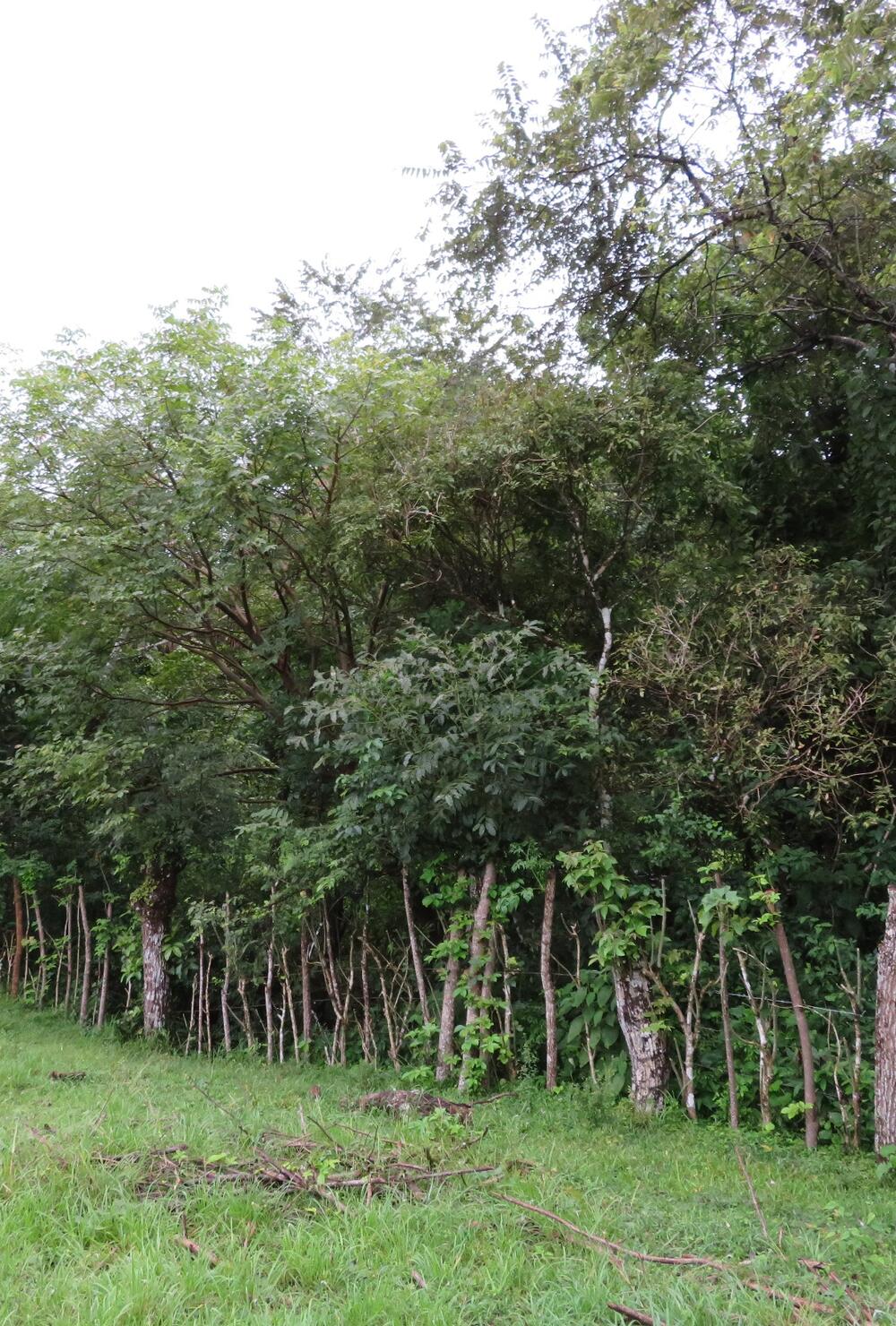You are here
Natural and Assisted Natural Regeneration

Natural regeneration in a riparian buffer zone on the El Ñopo farm, Los Santos Province, Panama. Assisted natural regeneration techniques were applied in this site by fencing, weeding, and applying fertilizer around desired tree species. © Jacob Slusser
Forest restoration can involve a variety of human interventions ranging from more active methods (i.e. tree planting) to more passive methods (natural and assisted natural regeneration), and the selection of which method to employ from site-to-site depends on a variety of social and ecological factors.
These featured articles detail the multiple facets of assisted natural regeneration (also referred to as passive restoration, natural regeneration, or accelerated natural regeneration) and the benefits, challenges, and application to a variety of regions and forest types.
The first three documents focus on specific strategies and approaches included within the umbrella of assisted natural regeneration (ANR). Friday et al. (1999) presents a guide to multiple techniques for assisting natural regeneration by suppressing fire, controlling weeds, spreading seed, and conducting enrichment planting in areas of Southeast Asia dominated by Imperata grasslands. Holl et. al (2020) reviews a 15-year, multi-site study in Costa Rica on the effectiveness of applied nucleation, a technique involving planting trees in islands or clusters to facilitate processes of natural regeneration. The results indicate that, compared to conventional plantations, applied nucleation is favorable in numerous categories, including recovery of flora and fauna groups, restoring ecosystem function, seed dispersal, woody recruitment, and cost. Reij et al. (2016) explores farmer-managed natural regeneration in Africa, examining both regeneration techniques that are utilized on-farm and reasons for farmer engagement. Drawing mainly on two case studies from Ethiopia, the authors emphasize the importance in shifting from tree planting to natural regeneration in order to achieve large-scale restoration targets in Africa and around the world.
The next three articles highlight the results of comparative studies analyzing the effectiveness of ANR compared to more active methods.
Crouzeilles et al. (2017) presents a meta-analysis of 133 studies on restoration in the tropics, concluding that ANR is more effective than active restoration in realizing restoration success for biodiversity and vegetative structure. Similarly, Shono et al. (2007) demonstrates that ANR practices were more successful than conventional restoration methods in terms of cost, biodiversity, time, and research input. Chazdon et al. (2016) reviews the conditions that favor ANR, social, political, and economic structures that may prevent application, and solutions to overcome said barriers. Authors suggest that tree planting alone cannot achieve global restoration targets, and they argue that assisted natural regeneration (ANR) can be an ecologically effective, cost efficient, and timely means of meeting global forest restoration targets.
Looking ahead to the future of tropical forest restoration, these six articles make it clear that strategies for assisting natural regeneration can be an effective and efficient way to conduct restoration and must be included in the range of restoration strategies employed for meeting the large-scale international restoration targets.
Featured articles:
Access more materials on Natural and Assisted Natural Regeneration

